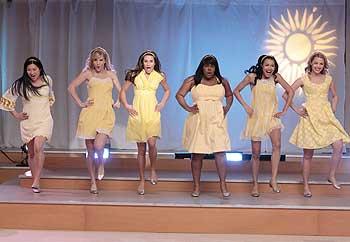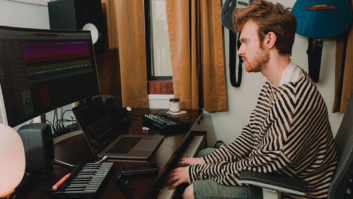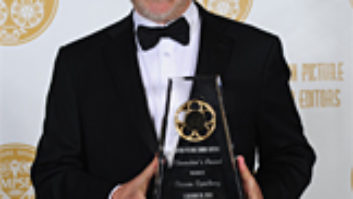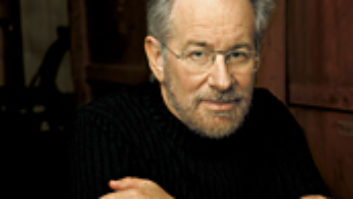
Glee castmembers perform a mash-up of Katrina and the Waves’ “Walking on Sunshine” and Beyonce’s “Halo.”
What do “Imagine,” “I Could Have Danced All Night” and “The Thong Song” have in common? Musically, not a lot. But they’ve all been covered on Fox’s smash hit show Glee, a smart, funny musical drama that chronicles the lives and loves of a bunch of social misfits who sing and dance together in their high school glee club.
Developed by Nip/Tuck creator Ryan Murphy and starring the hilarious Jane Lynch (40-Year-Old Virgin) and a cast of mostly stage actors, Glee‘s formula is simple: Nine students (and their oddball teachers) deal with typical teen issues, and the drama is played out in larger-than-life song-and-dance arrangements of iconic songs from the past four decades. More than 50 hits have been covered, including songs from artists ranging from Madonna to Kanye West to the Rolling Stones.
Glee attracts more than 8 million viewers each week. But the real success story is the music: iTunes downloads of Glee singles have topped 2 million, two soundtrack albums have been released and a concert tour is planned for 2010.
The show introduces classic hits to new audiences — the cast version of Journey’s “Don’t Stop Believin’,” showcased in the pilot, sold 500,000 downloads and generated new sales for the original. Glee also has a knack for turning show tunes into pop hits, propelling cast versions of “Defying Gravity” from Wicked and “Maybe This Time” from Cabaret up the charts.
The show owes much of its success to its superstar music team, led by Adam Anders, whose producing and songwriting credits include Ashley Tisdale, the Backstreet Boys, High School Musical 3 and Hannah Montana, The Movie. Anders is a hit-maker: He recently had 18 simultaneous singles on the iTunes chart, including 16 songs from Glee, one by Miley Cyrus and one from a Disney collective. A few years back, he wrote some TV themes for Fox; when Glee was being developed, the network suggested creator Murphy meet with Anders. He wasn’t hired right away.
“I think part of it was, he wanted this show to be the anti-High School Musical, and he was nervous because I had done High School Musical,” Anders says, laughing. “I told him, ‘Look, that’s just one thing that I’ve done so I understand the logistics of doing a musical, but obviously, the music doesn’t need to sound like that.’ He came back to me, I think it was on a Friday, and said, ‘Can you have [Amy Winehouse’s] “Rehab” to me Monday morning? If you nail it, the show’s yours.’ We spent the weekend on it, and the rest is history.”
Anders and his partner in Sweden, super-producer Peer Astrom (Celine Dion, Madonna), work on an intense timeline, with about seven days from music approval to show taping to producing songs. Their teams work across time zones, around the clock, arranging, tracking and mixing — multitasking to produce up to 11 songs in a single week. “We use the time change to our advantage, so when I go to bed he keeps working, and vice versa — basically, 24 hours a day, six days a week,” says Anders.
The team communicates via Skype and transfers files over the Internet. “At one point, I had three studios in Sweden going, I had three here and one in New York, at the same time,” says Anders, who records vocals at Chalice in Los Angeles. “I’m recording, then checking in every half hour on Skype, with all of the other things going on at the same time. It’s pretty crazy.
“The main thing it comes down to is having the right people,” he stresses. “Everybody working on my team is supertalented; everything they bring to the party is top-notch. You really only get one shot when you’re on this compressed a timetable. That’s what I’ve been most proud of: how we’ve been able to pull off so much volume at such a high level. There’s one episode where we’re doing a huge Broadway number with a full orchestra to a Kelly Clarkson cover, to a Rolling Stones song, back to a Dreamgirls cover, all in the same week.”

Producer/songwriter Adam Anders heads up the Glee music team.
Creating the songs is essentially a two-step process. Once a song is cleared, the team creates a guide demo with a “stunt double” — a singer who sounds like the cast member who will ultimately sing the song. After the arrangement is approved, castmembers are brought in to replace the vocal tracks. Anders records lead vocals separately, and has the group perform together around one mic. Anders uses a variety of mics on the castmembers: “Amber Riley [Mercedes] blows up pretty much everything she gets in front of,” he says. “She’s an amazing singer and she’s probably the most experienced singer in the studio coming in; she’s done background work. She ends up on a [Shure] SM7, which is the only thing that can handle her power. Lea [Michele, aka Rachel] is usually on a 47; for Cory [Montheith, quarterback Finn] we usually use a 251; and then the choir stuff is usually a 251 or 47 middle;and then I use 67s on the sides.”
Anders coaxes pop performances from singers who were initially out of their comfort zone in a recording studio. “Cory had never sung in the studio in his life before “Don’t Stop Believin’,” he says. “The first time we recorded, he didn’t know how to breathe and sing at the same time; he almost passed out. To see where he is now is like night and day; he’s come so far.” Lea Michele was accustomed to performing show tunes onstage. “The challenge with her was not can she sing, it was getting her confident that she can sing these different styles,” Anders says. “Onstage, there’s a different way you project and you use more vibrato; pop singing requires a lot of straight singing.” Anders says it’s rewarding watching the singers rise to the occasion. “They’re like, ‘I can’t do this.’ Then they get in there and tough it out, and it turns out amazing.”
Glee is all about vocals — big, huge vocals. Anders likens them to the way the show characters might sound in their own minds. “These kids, they’re like, ‘We sound amazing, we’re huge,’ and that’s what you want — big, grandiose sound.” Lots of vocals means lots of passes recorded in a big, live room. And lots of reverb. “I want the vocals to be inspiring,” he says. “People want to enjoy listening to it.”
Songs are prepared for broadcast and download simultaneously, but the mix aesthetic is the same. “There’s no synching to any picture, so it’s pretty much the way I would make any record,” Anders says. “We program in Logic, we do vocals in Pro Tools, we mix in Pro Tools, I do all the cut-downs in Pro Tools.” Two versions of each song are created: a full-length version for iTunes and an edited version for TV. For the show, Anders FTPs mix stems, broken out into separate backgrounds and leads, with and without effects.
Anders admits that producing a glee choir version of a great pop song “could be the cheesiest thing you’ve ever heard if you’re not careful. So the fine line for me and Peer when we arrange these things is, how do we keep this cool, current, something that could actually work on radio, but then put the ‘jazz hands’ on it?
“I’d be lying if I said I knew it was going to work,” Anders continues. “I did feel like when you heard ‘Don’t Stop Believin’,’ you definitely get goose bumps, and we were like, ‘Okay, we did something right here.’ It’s one of the greatest songs ever written, and we said, ‘Let’s just not screw this up.’ And a lot of it starts with that: Let’s stay true to the song, respect the song and add our Gleeness to it.”






